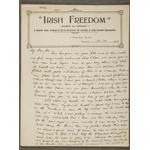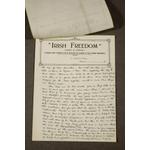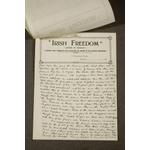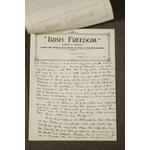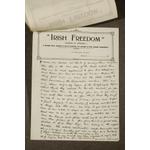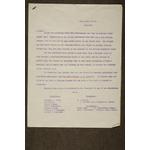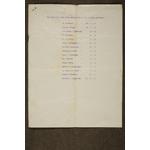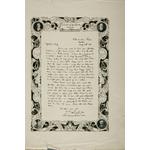The Seven Signatories of the Proclamation
Seán MacDiarmada, member of the Provisional Government of the Irish Republic
He was the principal IRB organiser and has been described as ‘the mainspring’ of the Rising. Seán MacDiarmada [John Joseph MacDermott] (1883-1916) was born in Corranmore near Kiltyclogher, Co. Leitrim, the son of Donald MacDermot, a carpenter and his wife Mary McMorrow.
He was educated at Corradoona national school and at night school in Tullinamoyle, Co. Cavan, where he learned bookkeeping and Irish. Following a spell in Scotland, MacDiarmada settled in Belfast in 1905, working as a tram conductor and later as a barman.
He joined the Gaelic League and the politically moderate Ancient Order of Hibernians. He was sworn into the Irish Republican Brotherhood by Denis McCullough, and helped to organise the republican Dungannon Clubs then being set up by McCullough and Bulmer Hobson. He also acted as an organiser for Sinn Féin.
Moving to Dublin in 1907, he came under the influence of Tom Clarke. He became a full-time organiser for the IRB and managed its newspaper Irish Freedom. Together with Clarke, MacCullough and Hobson he revitalised the IRB, this group assuming virtual control in 1911. Also in 1911, MacDiarmada received a serious setback when he was stricken with polio which left him lame and having to use a walking stick.
Around this time he was active in infiltrating cultural organisations such as the Gaelic Athletic Association and the Gaelic League, recruiting members to the IRB, and where possible getting them elected as officers of the relevant committees. Following the outbreak of the First World War in August 1914, he campaigned against Irishmen joining the British army, his efforts gaining him four months in Mountjoy Jail under the Defence of the Realm Act. On his release, he was co-opted with Clarke to the IRB Military Council.
MacDiarmada had a leading role in planning the 1916 Rising, the historian F.X. Martin characterising him as ‘the mainspring’. Well aware that most previous Irish revolutionary movements had been bedevilled with spies and informers, he was obsessively secretive in his planning, excluding most of his fellow IRB men from knowledge of the conspiracy, which was eventually to contribute to the confusion surrounding the outbreak of the Rising. MacDiarmada spent the Rising in the General Post Office with most of the other members of the Provisional Government.
Although he had no formal military rank, he was acknowledged by the garrison as one of the commanders due to his membership of the Provisional Government and his role in the IRB. He was tried by court-martial and executed by firing squad in Kilmainham Jail on 12 May, he and James Connolly being the last of the leaders to be executed. He was unmarried. It is likely that MacDiarmada had no illusions regarding the probable outcome of the Rising or of the fate of those taking part.
He believed that the only means of achieving a republic was revolution, but recognised that in the circumstances of 1916 a successful revolution was unlikely. Nevertheless, he seems to have thought that the Rising was necessary at that particular time—the eve of Home Rule and the likely partitioning of the country—to shock nationalists and unionists alike into a reappraisal of their destiny. Like Pearse, he may have believed in the efficacy of a blood sacrifice and martyrdom in the cause of freedom: in a speech at Tralee, Co. Kerry in 1914 he claimed that ‘the Irish patriotic spirit will die forever unless a blood sacrifice is made in the next few years’.
Such a statement, however, may not necessarily reflect his thinking and may amount to no more than rhetoric, being the sort of sentiment that could be guaranteed to raise a cheer from that particular audience.





